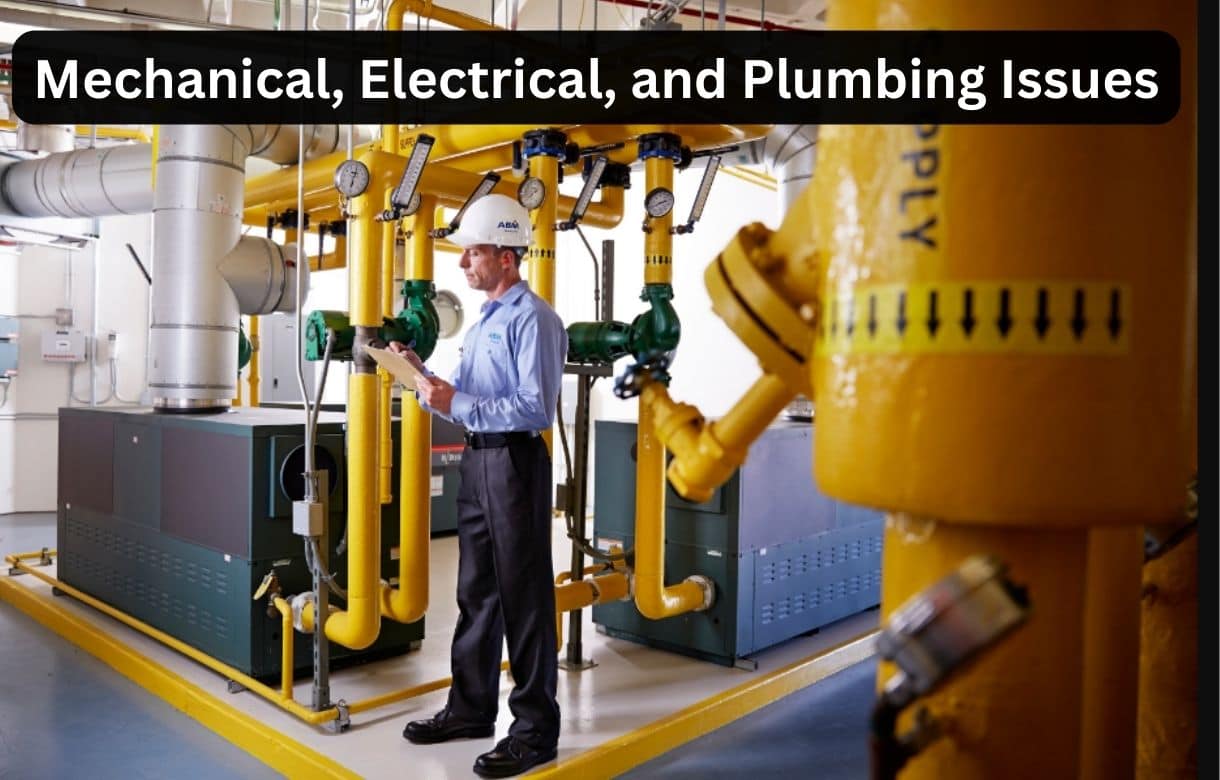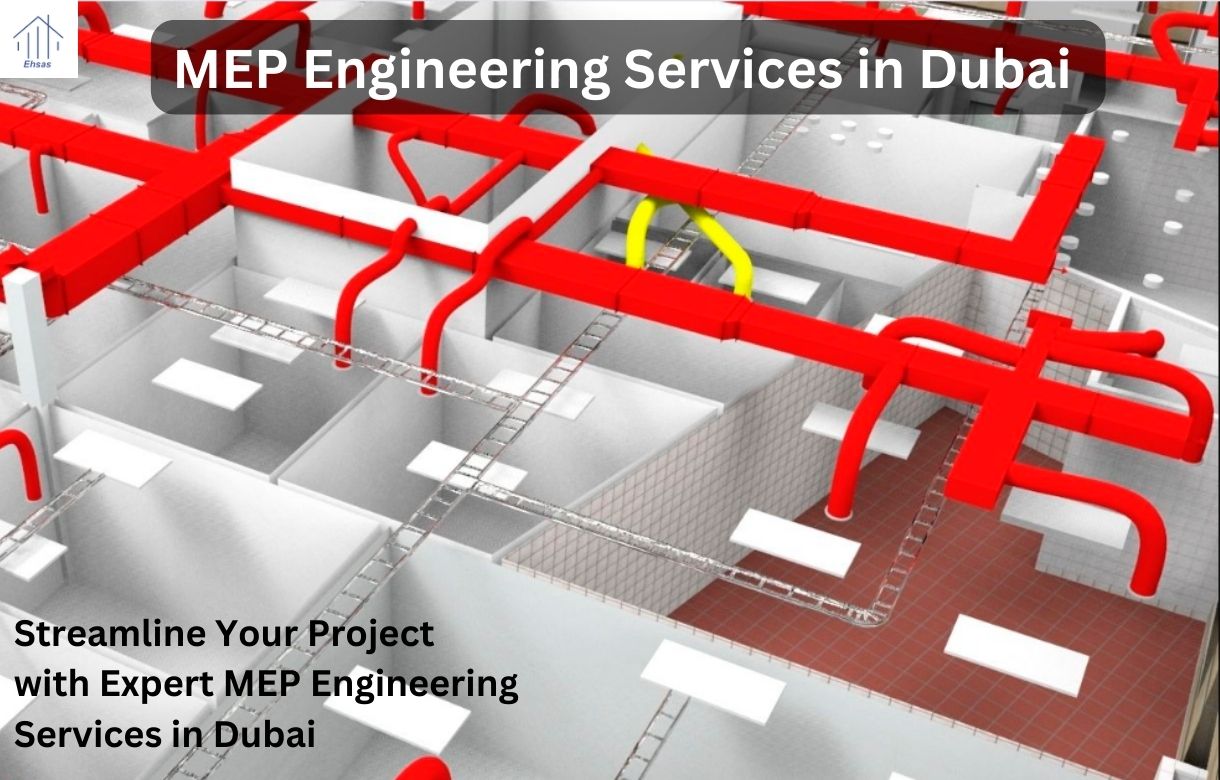Introduction:
Maintaining a well-functioning home or commercial space requires a proactive approach to mechanical, electrical, and plumbing (MEP) systems. These systems are integral to the comfort, safety, and efficiency of a building. When you are searching for the best Mechanical, Electrical, and Plumbing services you will find Ehsas at the front foot. Ehsas Technical and Cleaning Company LLC is the one-stop solution for all types of issues regarding mechanical, electrical, and plumbing.
However, when issues arise, they can disrupt daily activities and lead to costly repairs if not addressed promptly. This article aims to provide a detailed guide on troubleshooting common MEP issues, offering practical solutions and preventive measures.
1. Mechanical Systems Troubleshooting
Mechanical systems in a building typically include heating, ventilation, and air conditioning (HVAC) systems, as well as elevators and escalators in larger buildings. Common issues can range from inadequate heating or cooling to mechanical failures in moving parts.
1.1 HVAC Systems
Common Issues:
- Inadequate Heating or Cooling:
This can be due to a variety of reasons, including thermostat malfunctions, dirty filters, or refrigerant leaks.
- Strange Noises:
Rattling, buzzing, or clanging noises often indicate loose components, motor issues, or debris in the system.
- Weak Airflow:
Often caused by clogged filters, duct obstructions, or blower motor problems.
Troubleshooting Steps:
- Check the Thermostat:
The temperature of the thermostat should be set to the correct mode. So, check it properly and replace batteries if necessary.
- Inspect Filters:
Replace dirty or clogged filters regularly to maintain airflow and system efficiency.
- Examine Ducts:
Look for and clear any obstructions in the ductwork. Seal any leaks to prevent air loss.
- Listen for Noises:
Identify the source of strange noises and tighten or replace loose or worn-out components.
Preventive Measures:
- Schedule regular maintenance checks.
- Replace filters every 1-3 months.
- Keep the area around HVAC units clean and free of debris.
1.2 Elevators and Escalators
Common Issues:
- Stalling or Slow Movement:
This could be due to motor problems, control system issues, or obstructions.
- Unusual Noises:
Grinding or squeaking noises often indicate wear and tear on mechanical parts.
- Door Malfunctions:
Doors not opening or closing properly can be due to sensor issues or physical obstructions.
Troubleshooting Steps:
- Inspect Control Panels:
Check for error codes or malfunctions in the control systems.
- Lubricate Moving Parts:
Ensure all mechanical parts are properly lubricated to reduce wear and noise.
- Check Sensors:
Clean and align door sensors to ensure proper operation.
Preventive Measures:
- Conduct regular inspections and maintenance.
- Lubricate moving parts as per the manufacturer’s guidelines.
- Keep the area around elevators and escalators clear of debris and obstructions.
2. Electrical Systems Troubleshooting
Electrical issues can range from minor inconveniences like flickering lights to serious hazards like electrical fires. Prompt troubleshooting is essential to maintain safety and functionality.
2.1 Common Electrical Issues
Flickering Lights:
- Possible Causes: Loose bulbs, faulty wiring, or overloaded circuits.
- Troubleshooting Steps: Tighten bulbs, check wiring connections, and ensure circuits are not overloaded.
Power Outages:
- Possible Causes: Tripped circuit breakers, blown fuses, or external power issues.
- Troubleshooting Steps: Reset circuit breakers, replace blown fuses, and check with the power company for outages.
Electrical Surges:
- Possible Causes: Lightning strikes, power line damage, or faulty appliances.
- Troubleshooting Steps: Unplug devices during storms, install surge protectors, and check appliances for faults.
Overloaded Circuits:
- Possible Causes: Too many devices plugged into one circuit.
- Troubleshooting Steps: Redistribute electrical load across multiple circuits and avoid using high-wattage appliances simultaneously.
2.2 Preventive Measures
- Regular Inspections:
Have a qualified electrician inspect your electrical system periodically.
- Upgrade Wiring:
Ensure your wiring meets current safety standards, especially in older buildings.
- Use Surge Protectors:
Protect sensitive electronics from power surges.
- Avoid Overloading Circuits:
Be mindful of the electrical load on each circuit to prevent overheating and potential fires.
3. Plumbing Systems Troubleshooting
Plumbing issues can cause significant damage if not addressed quickly. The common problems in plumbing are water pressure, leaks, and clogs.
3.1 Common Plumbing Issues
Leaky Faucets:
- Possible Causes: Worn-out washers or seals.
- Troubleshooting Steps: Replace washers or seals to stop leaks.
Clogged Drains:
- Possible Causes: Buildup of hair, grease, or other debris.
- Troubleshooting Steps: Use a plunger or plumber’s snake to clear clogs. Chemicals can damage pipes thus avoid them from draining.
Running Toilets:
- Possible Causes: Faulty flapper valves, fill valves, or overflow tubes.
- Troubleshooting Steps: Inspect and replace faulty components to stop the toilet from running.
Low Water Pressure:
- Possible Causes: Sediment buildup in pipes, leaks, or faulty pressure regulators.
- Troubleshooting Steps: Clean aerators and showerheads, check for leaks, and replace pressure regulators if necessary.
3.2 Preventive Measures
- Regular Maintenance:
Inspect and maintain plumbing fixtures regularly.
- Avoid Flushing Non-Flushable Items:
Prevent clogs by only flushing appropriate items down the toilet.
- Install Water Softeners:
In areas with hard water, use water softeners to reduce sediment buildup.
- Insulate Pipes:
In colder climates, insulate pipes to prevent freezing and bursting.
4. General Tips for MEP System Maintenance
4.1 Professional Inspections and Maintenance
Schedule annual inspections by qualified professionals for all MEP systems to ensure they are functioning correctly and to catch potential issues early.
4.2 DIY Maintenance
For minor issues and regular maintenance, homeowners and building managers can handle tasks such as replacing filters, cleaning aerators, and tightening loose components.
4.3 Emergency Preparedness
Have a list of emergency contacts, including electricians, plumbers, and HVAC technicians, readily available.
Know the location of shut-off valves and circuit breakers to quickly address emergencies.
4.4 Documentation and Records
Keep detailed records of all maintenance and repairs performed on MEP systems. This can help in diagnosing recurring issues and planning future maintenance.
Conclusion
Troubleshooting mechanical, electrical, and plumbing issues requires a systematic approach and timely intervention. Resolving minor issues with regular maintenance and repairs can avoid escalating them into major problems. By understanding common problems and their solutions, homeowners and building managers can ensure the longevity and efficiency of their MEP systems, ultimately creating a safe and comfortable environment.
Remember, while many minor issues can be handled with DIY solutions, always consult a professional for major repairs or when dealing with complex systems. Prioritizing the maintenance of your MEP systems is an investment in the safety, functionality, and value of your property.
FAQ’s:
Q1: What should I check first if my HVAC system is not heating or cooling properly?
A1: First, check the thermostat settings and ensure it’s working. Next, inspect and replace dirty or clogged air filters, and look for obstructions or leaks in the ductwork.
Q2: Why are my lights flickering, and how can I fix it?
A2: Flickering lights can be caused by loose bulbs, faulty wiring, or overloaded circuits. Tighten bulbs, check and secure wiring connections, and avoid overloading circuits.
Q3: What steps can I take to prevent my plumbing pipes from freezing in cold weather?
A3: Insulate pipes, keep cabinet doors open to allow warm air to circulate, let faucets drip slightly, and seal any cracks to prevent cold air from entering.
Q4: My toilet keeps running after flushing. What might be the cause, and how do I fix it?
A4: A running toilet is often due to a faulty flapper valve, fill valve, or overflow tube. Inspect and replace any faulty components to stop the continuous running.
Q5: How can I tell if my electrical circuit is overloaded, and what should I do about it?
A5: Signs of an overloaded circuit include tripped breakers, dimming lights, and buzzing sounds. Redistribute the electrical load and use multiple circuits for high-wattage appliances.








